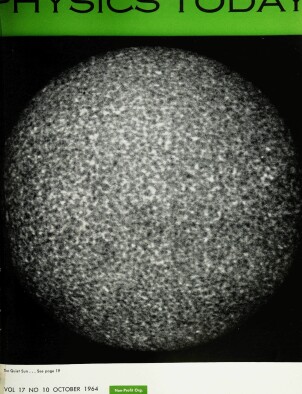Something new under the quiet sun
DOI: 10.1063/1.3051171
This article constitutes a first progress report on United States participation in the International Years of the Quiet Sun, a two‐year, world‐wide scientific enterprise, involving sixty‐nine nations, that started on January 1, 1964. Before summarizing the current state of affairs, let us first view IQSY in historical perspective, and outline its aims and objectives. The immediate predecessor of IQSY in the evolution of international scientific programs, for which the zero point in time was 1882 (First International Polar Year), was the widely heralded International Geophysical Year (1957–1958).
This article is only available in PDF format
References
1. Martin A. Pomerantz, “International Years of the Quiet Sun 1964–65”, Science, 142, 3596 (1963).
2. A preliminary United States Program for IQSY was issued in February 1963. A revised edition will be issued in the near future and will be available from E. Dyer. Executive Secretary, US IQSY Committee, National Academy of Sciences, Washington 25, D.C.
3. See, for example, IG Bulletin, No. 84, June 1964.
4. The “IQSY Calendar” is published by and may be obtained from International Scientific Radio Union, 7 Place Danco, Brussels 18, Belgium, Copies are also available from the IQSY Secretariat. The calendar is reproduced in IG Bulletin No. 71, August 1963.
5. Helen W. Dodson and E. Ruth Hedeman. “Solar Minimum and the International Years of the Quiet Sun”, Science, 143, 237 (1964);
and Helen W. Dodson, E. Ruth Hedeman, and Frederic L. Stewart, “Solar Activity During the First Six Months of IQSY” (to be published in Science).
More about the Authors
Martin A. Pomerantz. Bartol Research Foundation, Franklin Institute.




